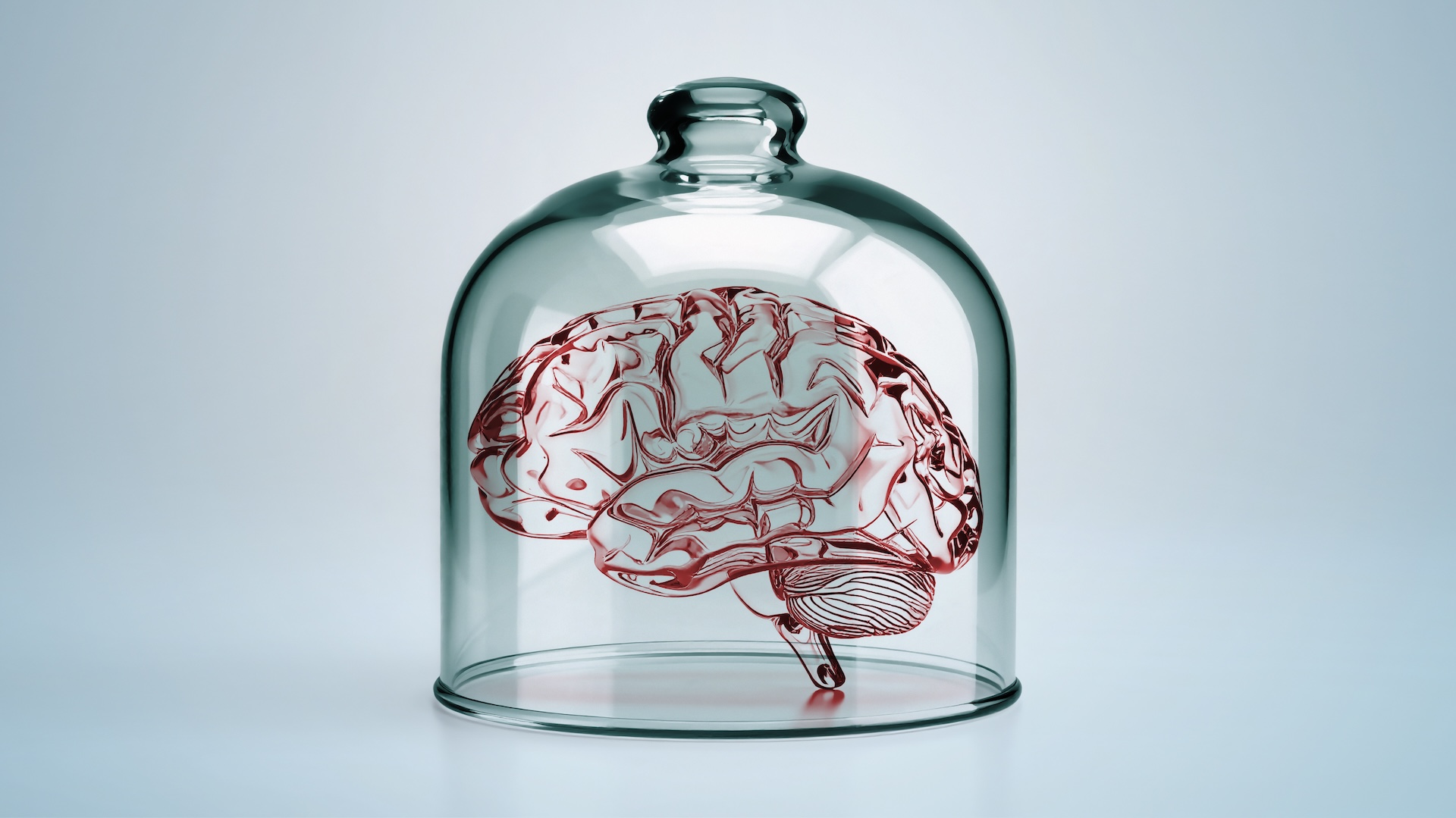Tiny ‘brains’ grown in the lab could become conscious and feel pain — and we’re not ready
By Kamal Nahas
Copyright livescience

Skip to main content
Close main menu
Live Science
Sign up to our newsletter
View Profile
Search Live Science
Planet Earth
Archaeology
Physics & Math
Human Behavior
Science news
Life’s Little Mysteries
Science quizzes
Newsletters
Story archive
Skyscraper-sized asteroid flyby
Mysterious hand positions on Maya alter
Anthropologist Ella Al-Shamahi on human origins
Treasure in scorched Roman-era house
Ant clones members of another species
Don’t miss these
Viruses, Infections & Disease
‘We have basically destroyed what capacity we had to respond to a pandemic,’ says leading epidemiologist Michael Osterholm
Neuroscience
Map of 600,000 brain cells rewrites the textbook on how the brain makes decisions
Neuroscience
Can adults make new brain cells? New study may finally settle one of neuroscience’s greatest debates
Artificial Intelligence
Would outsourcing everything to AI cost us our ability to think for ourselves?
Artificial Intelligence
AI could soon think in ways we don’t even understand — evading our efforts to keep it aligned — top AI scientists warn
Neuroscience
New pocket-size model of ALS ‘breathes and flows like human tissue’
Human Behavior
Scientific objectivity is a myth — here’s why
Fertility, Pregnancy & Birth
Scientists grow mini amniotic sacs in the lab using stem cells
Fertility, Pregnancy & Birth
$14,000 pregnancy robot from China isn’t real. But is a similar technology possible?
Science news this week: A key Atlantic current nears collapse, the world’s biggest iceberg shatters, and mouse brains rewrite neuroscience
Artificial Intelligence
AI hallucinates more frequently the more advanced it gets. Is there any way of stopping it?
Artificial Intelligence
AI chatbots oversimplify scientific studies and gloss over critical details — the newest models are especially guilty
Neuroscience
When your mind goes ‘blank,’ your brain activity resembles deep sleep, scans reveal
Scraps of ancient viruses make up 40% of our genome. They could trigger brain degeneration.
Artificial Intelligence
‘There’s no shoving that genie back in the bottle’: Readers believe it’s too late to stop the progression of AI
Neuroscience
Tiny ‘brains’ grown in the lab could become conscious and feel pain — and we’re not ready
Kamal Nahas
18 September 2025
Lab-grown brain tissue is too simple to experience consciousness, but as innovation progresses, neuroscientists question whether it’s time to revisit the ethics of this line of research.
When you purchase through links on our site, we may earn an affiliate commission. Here’s how it works.
Some scientists argue that miniature models of the brain grown in the lab could soon become conscious. And our current regulations don’t acknowledge that.
(Image credit: Francesco Carta fotografo via Getty Images)
Scientists are getting closer to growing human brains in the lab, and it’s spurring an ethical debate over the welfare of these lab-reared tissues.
The debate surrounds “brain organoids,” which are sometimes mistaken for sci-fi-inspired “brains in boxes.” However, these small assemblies of brain tissue grown from stem cells are too simple to function like a real human brain. As such, scientists have assumed brain organoids lack consciousness, which has led to lax research regulations.
Some scientists, however, take a different view.
You may like
Map of 600,000 brain cells rewrites the textbook on how the brain makes decisions
Can adults make new brain cells? New study may finally settle one of neuroscience’s greatest debates
Would outsourcing everything to AI cost us our ability to think for ourselves?
“We feel that in the fear of hype and science-fiction inspired exaggeration, the pendulum has swung far too far in the opposite direction,” Christopher Wood, a bioethics researcher at Zhejiang University in China, told Live Science in an email. In a perspective piece published Sept. 12 in the journal Patterns, Wood and his colleagues argued that technological advances may soon lead to the creation of conscious organoids.
The authors say regulations regarding the use of organoids should be reviewed. It would be unethical for a conscious organoid to experience its own thoughts and interests, or to feel pain, said Boyd Lomax, a neuroscientist at Johns Hopkins University.
But reigning in consciousness may not be straightforward.
Related: ‘Minibrains’ reveal secrets of how key brain cells form in the womb
Sign up for the Live Science daily newsletter now
Get the world’s most fascinating discoveries delivered straight to your inbox.
Contact me with news and offers from other Future brandsReceive email from us on behalf of our trusted partners or sponsorsBy submitting your information you agree to the Terms & Conditions and Privacy Policy and are aged 16 or over.
Consciousness is difficult to define
The stem cells used to make brain organoids grow side by side and lack complex organization when they’re cultured on a 2D surface, like a dish. But when they’re grown in a solid gel or a spinning bioreactor that keeps the cells aloft, they adopt 3D anatomical networks that resemble what’s seen in an embryonic brain.
Although they develop 3D features, brain organoids are too simple to be conscious, some neuroscientists argue. Consciousness in a real brain arises when different regions of the organ communicate, but organoids resemble only a single part of the brain. And none of these lab-grown minibrains are larger than 0.16 inches (4 millimeters) in diameter, suggesting important faculties for consciousness are missing.
People often think of consciousness in humans or animals as a state of being aware of oneself. However, “we think of consciousness in organoids as a basic level of sensations, the capacity to feel pain and pleasure,” said Andrea Lavazza, a moral philosopher and neuroethicist at Pegaso University in Italy.
You may like
Map of 600,000 brain cells rewrites the textbook on how the brain makes decisions
Can adults make new brain cells? New study may finally settle one of neuroscience’s greatest debates
Would outsourcing everything to AI cost us our ability to think for ourselves?
Most neuroscientists define consciousness as self-awareness or the ability to feel or experience something, Alysson Muotri, a neuroscientist at the University of California, San Diego, told Live Science in an email. But there is no universal, agreed-upon definition, he said.
Some definitions of consciousness focus on the brain’s ability to process and respond to its environment through senses, like sight and hearing. Brain organoids are cultured outside a body and cannot receive such signals, Lavazza noted. But in the future, more advanced organoids could still theoretically experience pain. In humans, membranes that envelop the brain, called meninges, contain neurons that can send pain signals to the organ. The worry is the same could be possible in more sophisticated organoids.
On the flip side, Boyd argued that “if an organoid has the internal neural architecture necessary for representing pain, then no external signal would be required.” So, there need not be a pain signal from a neuron for pain to occur; this is how phantom pains arise in people who have lost limbs.
Wood noted, however, that it is unclear whether an organoid could experience something tantamount to phantom pain, as this might depend on having a memory of the lost limb. So in a word, it’s complicated.
How do you measure consciousness?
The perspective piece pointed out that, even in humans, scientists don’t have great methods of objectively measuring consciousness. Lavazza said the only way to definitively detect consciousness is to ask a person what they are feeling. That doesn’t mean that people who can’t communicate lack consciousness, but definitively measuring it is more difficult.
In comatose patients or people with locked-in syndrome — a neurological condition that paralyzes the body and makes communication extremely challenging — doctors rely on indirect signals, such as electrical brain activity, Lomax said. Via this activity, they can only infer consciousness, not produce a definitive measurement.
An array of microscope image of chimeroids, a type of brain organoid grown with stem cells from multiple people. (Image credit: Noelia Antón-Bolaños and Irene Faravelli)
Another measure involves “perturbational complexity,” which assesses the complexity of brain signals produced in response to a stimulus, such as a magnetic field being applied to the scalp. Doctors judge that the more complex the patterns of neuronal firing, the more likely the patient is conscious, Lomax said.
But some indirect signals of consciousness, including perturbational complexity, can be seen even in neurons grown in a dish, he emphasized. That suggests they are not good indicators of the phenomenon.
Complexity begets consciousness
Skeptics who don’t believe brain organoids could feasibly gain consciousness argue that they lack the anatomical complexity required, including a wide variety of cell types and blood vessels to deliver the oxygen and resources needed for complex signaling.
But in the next five to 10 years, technological innovations could enable scientists to create complex organoids capable of consciousness, Wood said. A study published in August reported a method for introducing blood vessels into brain organoids, and one from September found ways to incorporate an additional cell type, called microglia, that can’t be produced from neural stem cells. Previously, scientists grew brain organoids with rudimentary “eyes,” and another group grew some with blood-brain barriers, which help guard the organ from toxins and pathogens.
Although current organoids resemble only one brain region, neuroscientists can fuse them to make “assembloids” representing multiple regions. Lavazza said such assembloids could feasibly feel pain if they carry the neural circuitry required for pain sensation — even if they have no pain-sensing neurons.
Related: ‘We can’t answer these questions’: Neuroscientist Kenneth Kosik on whether lab-grown brains will achieve consciousness
Should regulations change?
Rules relating to brain organoid research are lenient in part because the International Society for Stem Cell Research (ISSCR) states that these entities are unable to perceive pain. Its guidelines say, “At this time, there is no biological evidence to suggest any issues of concern, such as consciousness or pain perception with organoids corresponding to CNS [central nervous system] tissues, that would warrant review through the specialized oversight process.”
However, the experts Live Science spoke to agreed that the regulations should be reviewed following recent breakthroughs in organoid development.
“That was such a conservative vision of the ISSCR, and it needs to be revised by a multidisciplinary team, not only stem cell biologists,” said Muotri, who is the founder of Tismoo, a company that develops brain organoids.
The ethical concerns partly relate to organoids potentially being able to feel pain and to form their own thoughts. “The welfare of the conscious organoid, once it is produced, needs to be taken into account, as it has become a morally relevant entity with interests,” Wood explained.
RELATED STORIES
—Could mini space-grown organs be our ‘cancer moonshot’?
—Scientists just grew the 1st-ever ‘minibrains’ from multiple people’s cells
—Mini model of human embryonic brain and spinal cord grown in lab
Lavazza takes a different stance. “I personally do not think it would be unethical to grow brain organoids with consciousness,” he said, adding that “scientists do experiments with other conscious entities, such as mice.” Lomax argued that if brain organoids achieve consciousness, they should receive similar regulatory oversight as animals do in research.
Although lab-grown brains might seem like something out of “Brave New World,” they may become a reality soon. Assessing consciousness and agreeing on regulations will be tricky, but Wood argued that the burden of proof should lie with the skeptic who aims to disprove consciousness rather than with the advocate who aims to show it could be feasible.
At the very least, his article pointed out, scientists shouldn’t rule out the possibility.
Brain quiz: Test your knowledge of the most complex organ in the body
Kamal Nahas
Social Links Navigation
Live Science Contributor
Kamal Nahas is a freelance contributor based in Oxford, U.K. His work has appeared in New Scientist, Science and The Scientist, among other outlets, and he mainly covers research on evolution, health and technology. He holds a PhD in pathology from the University of Cambridge and a master’s degree in immunology from the University of Oxford. He currently works as a microscopist at the Diamond Light Source, the U.K.’s synchrotron. When he’s not writing, you can find him hunting for fossils on the Jurassic Coast.
You must confirm your public display name before commenting
Please logout and then login again, you will then be prompted to enter your display name.
Map of 600,000 brain cells rewrites the textbook on how the brain makes decisions
Can adults make new brain cells? New study may finally settle one of neuroscience’s greatest debates
Would outsourcing everything to AI cost us our ability to think for ourselves?
AI could soon think in ways we don’t even understand — evading our efforts to keep it aligned — top AI scientists warn
New pocket-size model of ALS ‘breathes and flows like human tissue’
Scientific objectivity is a myth — here’s why
Latest in Neuroscience
Map of 600,000 brain cells rewrites the textbook on how the brain makes decisions
‘Minibrains’ reveal secrets of how key brain cells form in the womb
New brain implant can decode a person’s ‘inner monologue’
When your mind goes ‘blank,’ your brain activity resembles deep sleep, scans reveal
Warm and cool temperatures travel on completely different paths to the brain
New pocket-size model of ALS ‘breathes and flows like human tissue’
Latest in News
Jaguar in Brazil smashes record for the species’ longest documented swim
See the moon, Venus and Regulus in a rare triple conjunction tomorrow
RFK’s handpicked advisers are coming for the childhood vaccine schedule. Here’s what to know.
Tiny ‘brains’ grown in the lab could become conscious and feel pain — and we’re not ready
‘There’s no shoving that genie back in the bottle’: Readers believe it’s too late to stop the progression of AI
Oldest-known dome-headed dinosaur discovered sticking out of a cliff in Mongolia’s Gobi Desert
LATEST ARTICLES
See the moon, Venus and Regulus in a rare triple conjunction tomorrow
Jaguar in Brazil smashes record for the species’ longest documented swim
There’s a 90% chance we’ll see a black hole explode within a decade, physicists say
RFK’s handpicked advisers are coming for the childhood vaccine schedule. Here’s what to know.
‘There’s no shoving that genie back in the bottle’: Readers believe it’s too late to stop the progression of AI
Live Science is part of Future US Inc, an international media group and leading digital publisher. Visit our corporate site.
Contact Future’s experts
Terms and conditions
Privacy policy
Cookies policy
Accessibility Statement
Advertise with us
Web notifications
Editorial standards
How to pitch a story to us
Future US, Inc. Full 7th Floor, 130 West 42nd Street,
Please login or signup to comment
Please wait…



